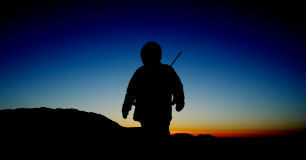
"We still have a daylight and there's still blue, green, red down there - there's sun sign still," said Zipporah Ootooq Aronsen, who lives in Resolute Bay, Nunavut. "It's not usually like that."
People in Resolute Bay now sometimes see a distant island that in the past was only visible during daylight hours.
"It never happened like that before," Aronsen said. "Now we can see it once in a while, when it's a clear day."
Wayne Davidson, a weather researcher in Resolute Bay, said warmer thermal layers over cold dense polar air cause light to bend and travel farther.
"If there's a huge contrast between colder and warmer air, there's longer travel of light from any locations," he said.
Inuit have been noticing changes during the dark season for years but the changes are becoming more visible as the climate warms, Davidson said.
"It should be usually, around average, - 31 degrees," he said. "It was, couple of days ago, - 5 or something like that, so it's pretty wild."
That refraction of light at the border between cold and warm air is what's allowing people to see farther than normal, Davidson said.
"Refraction makes light travel," he said.
Jaypetee Akeeagok, who lives in Grise Fiord, Nunavut, said the weather has also been unusually warm there.
"You can actually drive Skidoo around town without gloves on," he said.
And people in Grise Fiord have also noticed there's more light in winter.
"Twenty years ago, we wouldn't even be able to see the whole village, in high noon, which is only nine kilometres, but now we get to see some daylight," Akeeagok said.



Reader Comments
to our Newsletter